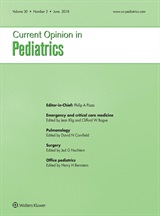Posted on February 01, 2016
Source: Current Opinion in Pediatrics

Rainwater-Lovett K, Uprety P, Persaud D
PURPOSE OF REVIEW:
The known timing of HIV infection in perinatal transmission, combined with the capacity for early antiretroviral therapy (ART) initiation and immune reconstitution, can provide unique insights into HIV persistence. The scientific basis for a pediatric-specific research agenda aimed at HIV remission and cure is discussed.
RECENT FINDINGS:
Accumulating evidence supports a favorable biomarker profile for immunotherapeutic interventions in early treated, perinatally infected individuals. HIV DNA concentrations in infected cells of early treated infants decrease over the first few years of life and, after more than 10 years of ART, the overwhelming majority of noninduced proviral genomes are replication-deficient. With early ART initiation, approximately half of perinatally infected individuals become seronegative. Studies of untreated infants and vaccine trials indicate that infected infants can generate HIV-specific humoral responses. Taken together, this evidence suggests that early treatment results in low levels of replication-competent provirus, an absence of HIV-specific immunity, and the capacity to generate immune responses to potential immunotherapeutic interventions.
SUMMARY:
Perinatally HIV-infected individuals require lifelong ART because of the prompt establishment of viral latency in long-lived resting memory CD4 T cells that rekindle viremia upon treatment cessation. However, intense research efforts are ongoing to perturb HIV latency toward reservoir clearance for virologic remission and cure in which perinatally infected individuals can discontinue ART.